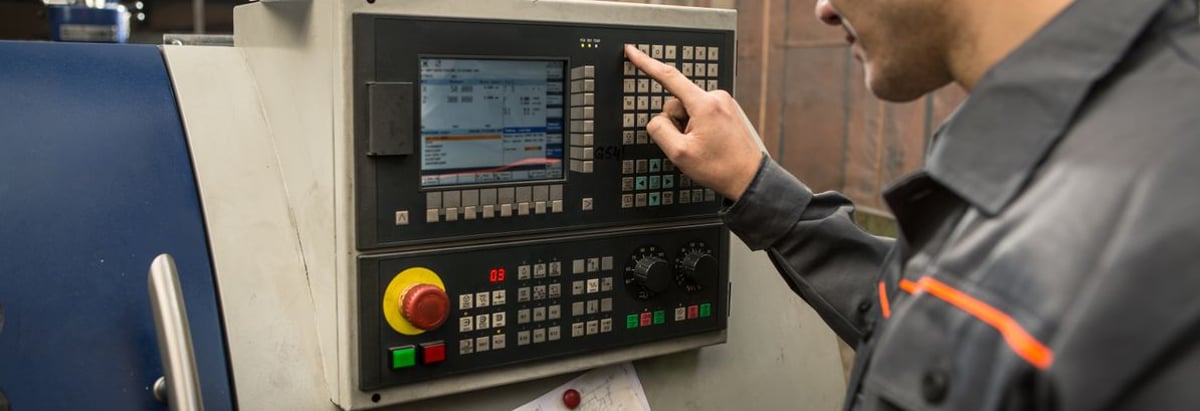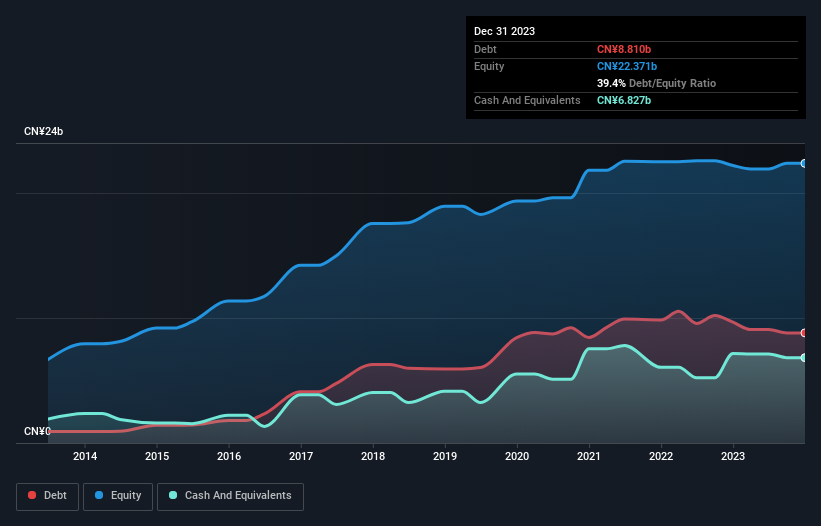- Hong Kong
- /
- Electronic Equipment and Components
- /
- SEHK:2018
Is AAC Technologies Holdings (HKG:2018) A Risky Investment?

Howard Marks put it nicely when he said that, rather than worrying about share price volatility, 'The possibility of permanent loss is the risk I worry about... and every practical investor I know worries about.' So it might be obvious that you need to consider debt, when you think about how risky any given stock is, because too much debt can sink a company. We note that AAC Technologies Holdings Inc. (HKG:2018) does have debt on its balance sheet. But the real question is whether this debt is making the company risky.
What Risk Does Debt Bring?
Debt assists a business until the business has trouble paying it off, either with new capital or with free cash flow. Ultimately, if the company can't fulfill its legal obligations to repay debt, shareholders could walk away with nothing. While that is not too common, we often do see indebted companies permanently diluting shareholders because lenders force them to raise capital at a distressed price. Of course, plenty of companies use debt to fund growth, without any negative consequences. When we think about a company's use of debt, we first look at cash and debt together.
See our latest analysis for AAC Technologies Holdings
How Much Debt Does AAC Technologies Holdings Carry?
The image below, which you can click on for greater detail, shows that AAC Technologies Holdings had debt of CN¥8.81b at the end of December 2023, a reduction from CN¥9.66b over a year. However, it also had CN¥6.83b in cash, and so its net debt is CN¥1.98b.

A Look At AAC Technologies Holdings' Liabilities
The latest balance sheet data shows that AAC Technologies Holdings had liabilities of CN¥10.1b due within a year, and liabilities of CN¥6.41b falling due after that. Offsetting these obligations, it had cash of CN¥6.83b as well as receivables valued at CN¥6.39b due within 12 months. So its liabilities outweigh the sum of its cash and (near-term) receivables by CN¥3.32b.
Of course, AAC Technologies Holdings has a market capitalization of CN¥29.9b, so these liabilities are probably manageable. But there are sufficient liabilities that we would certainly recommend shareholders continue to monitor the balance sheet, going forward.
In order to size up a company's debt relative to its earnings, we calculate its net debt divided by its earnings before interest, tax, depreciation, and amortization (EBITDA) and its earnings before interest and tax (EBIT) divided by its interest expense (its interest cover). Thus we consider debt relative to earnings both with and without depreciation and amortization expenses.
AAC Technologies Holdings has a very low debt to EBITDA ratio of 0.63 so it is strange to see weak interest coverage, with last year's EBIT being only 2.5 times the interest expense. So one way or the other, it's clear the debt levels are not trivial. Importantly, AAC Technologies Holdings's EBIT fell a jaw-dropping 39% in the last twelve months. If that decline continues then paying off debt will be harder than selling foie gras at a vegan convention. There's no doubt that we learn most about debt from the balance sheet. But ultimately the future profitability of the business will decide if AAC Technologies Holdings can strengthen its balance sheet over time. So if you want to see what the professionals think, you might find this free report on analyst profit forecasts to be interesting.
Finally, a business needs free cash flow to pay off debt; accounting profits just don't cut it. So it's worth checking how much of that EBIT is backed by free cash flow. Happily for any shareholders, AAC Technologies Holdings actually produced more free cash flow than EBIT over the last three years. There's nothing better than incoming cash when it comes to staying in your lenders' good graces.
Our View
AAC Technologies Holdings's EBIT growth rate was a real negative on this analysis, although the other factors we considered were considerably better. There's no doubt that its ability to to convert EBIT to free cash flow is pretty flash. Looking at all this data makes us feel a little cautious about AAC Technologies Holdings's debt levels. While debt does have its upside in higher potential returns, we think shareholders should definitely consider how debt levels might make the stock more risky. There's no doubt that we learn most about debt from the balance sheet. However, not all investment risk resides within the balance sheet - far from it. These risks can be hard to spot. Every company has them, and we've spotted 1 warning sign for AAC Technologies Holdings you should know about.
If you're interested in investing in businesses that can grow profits without the burden of debt, then check out this free list of growing businesses that have net cash on the balance sheet.
New: Manage All Your Stock Portfolios in One Place
We've created the ultimate portfolio companion for stock investors, and it's free.
• Connect an unlimited number of Portfolios and see your total in one currency
• Be alerted to new Warning Signs or Risks via email or mobile
• Track the Fair Value of your stocks
Have feedback on this article? Concerned about the content? Get in touch with us directly. Alternatively, email editorial-team (at) simplywallst.com.
This article by Simply Wall St is general in nature. We provide commentary based on historical data and analyst forecasts only using an unbiased methodology and our articles are not intended to be financial advice. It does not constitute a recommendation to buy or sell any stock, and does not take account of your objectives, or your financial situation. We aim to bring you long-term focused analysis driven by fundamental data. Note that our analysis may not factor in the latest price-sensitive company announcements or qualitative material. Simply Wall St has no position in any stocks mentioned.
About SEHK:2018
AAC Technologies Holdings
An investment holding company, provides sensory experience solutions in Greater China, the United States, Europe, Other Asian countries, and internationally.
Flawless balance sheet with proven track record.
Similar Companies
Market Insights
Community Narratives





